To provide smooth balance and support, your car’s tires must always have enough air to handle the many surfaces you may drive on. Without enough air to reinforce the tire, you’ll face a higher risk of poor fuel economy, flats, blow-outs, and other issues that may require costly auto repairs. Fortunately, it’s fairly easy to tell if you’re headed for trouble. If you’re concerned about underinflated tires, here are a few simple ways to determine if they need extra air.
A flat tire is the simplest way to tell if inflation is needed. Usually, the best way to detect a flat is to do a quick spot check before you drive. However, you might also have a flat if you find that it’s difficult to reach certain speeds or hear odd sounds coming from under the car.
Using a digital pressure meter, occasionally check your tires see if the air pressure is at the manufacturer-recommended level. If you have a newer vehicle, your car’s dashboard may also display a warning light when your tire pressure has dropped too low.
Tires gradually lose air pressure as the temperature drops. As such, you may want to check your air levels any time your car is exposed to sudden decreases in temperature. While the amount may be minimal, replacing the lost air will improve handling on winter roads—especially if you encounter ice and snow.
When there isn’t enough air to reinforce the tire’s exterior, the rubber will become more susceptible to vibration. If this happens, your steering and handling may suffer. You might also feel shaking when you drive—especially at higher speeds. Since vibration is also related to other common auto repair issues—such as suspension damage—it’s best to have the problem looked at by a mechanic as soon as possible.
It’s estimated that for about every PSI lost in tire pressure, your car will experience a .2% drop in fuel economy. If your wheels are losing a considerable amount of air, you might end up having to fill up on gas more often until you reestablish proper pressure levels.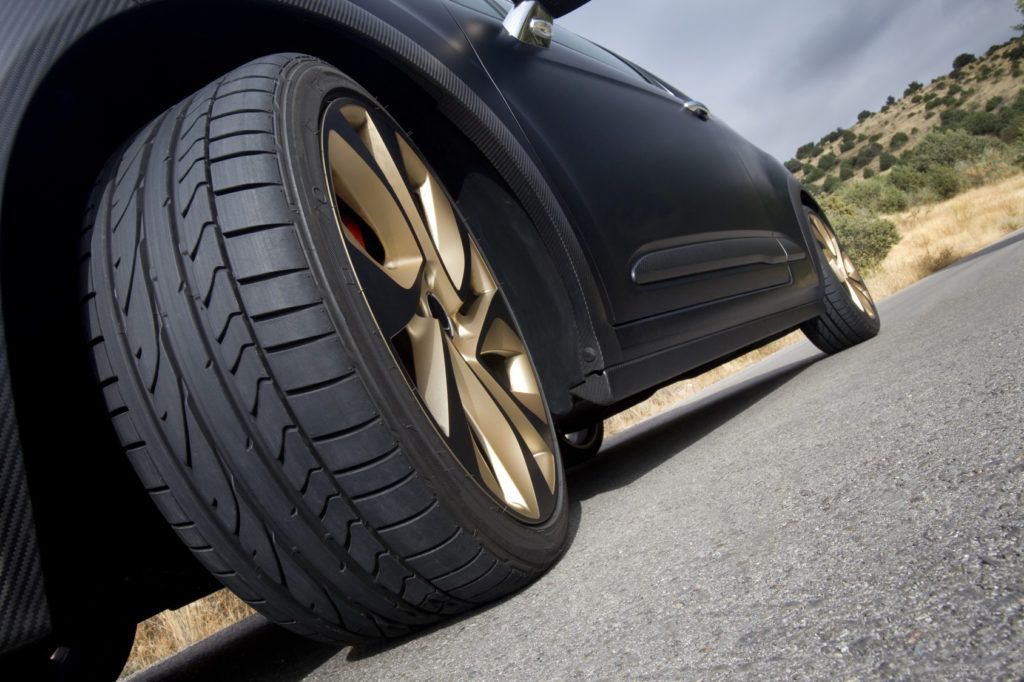
When adding air doesn’t help address your pressure problems, turn to the wide inventory of high-quality products offered by Oak Hollow Tire Car Care Center in High Point, NC. As an ASE®-certified auto repair shop and tire dealer, this provider will connect you to the best solution for your wheels—including selections from Bridgestone®, Firestone®, and Fuzion®. In addition to tire replacement, these mechanics also offer many other services to help you maintain a smooth ride—including tire rotation and wheel alignment. For more details on their affordable car maintenance and repair options, visit this shop online. To schedule service or inquire about available inventory, call (336) 841-6553.
Auto Body Repair
Oak Hollow Tire Car Care Center Inc.
2410 Eastchester Dr., High Point, NC 27265
CALL US+1 (336) 841-6553CALL US+1 (336) 841-6553
VIEW BUSINESS PROFILE
We’ve all been there. You start your car in the morning, and you’re greeted with a “Low Tire Pressure” warning. The car isn’t smart enough to tell you if you have a flat or the tire just needs air.
You start your car in the morning, and you’re greeted with a “Low Tire Pressure” warning. The car isn’t smart enough to tell you if you have a flat or the tire just needs air.
If it’s the same tire over and over, then there’s probably a puncture. If multiple tires are low, the weather is starting to get colder, and the pressure normalizes after driving to work, then it’s likely that your tires just need some extra air.
To help out, I put together this guide. I’ll walk you through the troubleshooting process, give you some important questions to ask yourself, and teach you more about how your tire works. By the end, you’ll be able to tell if your tire is flat or just needs air.
Before getting into the specifics, I want to talk about how your tire works. Each tire is made up of the same parts:
The tread. This is the textured rubber on the outer face of your tire. With a healthy tire, the tread is the only thing that comes in contact with the road. The different grooves help your tire get traction on the surface your car is driving on.
The different grooves help your tire get traction on the surface your car is driving on.
A sidewall. The sidewall is the rubber part that goes vertically on your tire. This gives your tires some added lateral strength and keeps everything together.
Plies. These are layers of different fabrics inside of your tire. When air is put into your car, it gets pressurized between these plies.
Air valve. There’s a little nub that sticks out of each tire. This is the air valve where you pump air into the tire. It has a hose that feeds into the center of your tire between plies. As you add air, you’re pressurizing the inside of your tire and expanding the rubber. This is easier to see on a bike tire which is smaller and requires less air.
The importance of this guide revolves around how important air is inside of your car tires. There’s a reason why alarms start going off when your tires have too little or too much pressure.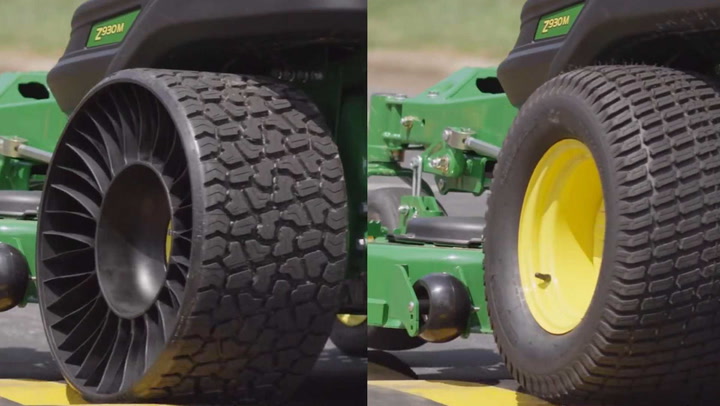
As I mentioned, adding air to your tires increases the pressure. When the tire is pressurized, the rubber will expand outwards. With too much pressure, there’s too much expansion and the opposite is true with too little pressure.
Tires are manufactured for their tread to sit on the road a specific way. This optimizes how much grip your tires have without ruining your fuel-efficiency or car’s performance.
Since pressure determines how the rubber sits, it also changes how the tread acts on the road. If you have way too much pressure, then your tread will have an arc to it which leads to a worsened traction.
With too little pressure, your tread falls flat and some of your sidewalls could be compromised while you drive.
The goal is to keep your tires within the golden pressure range at all times. This is the PSI value posted on your doorframe.
If your air pressure is too low or high, you might notice:
As a new driver, you might have been taught how to change a flat tire.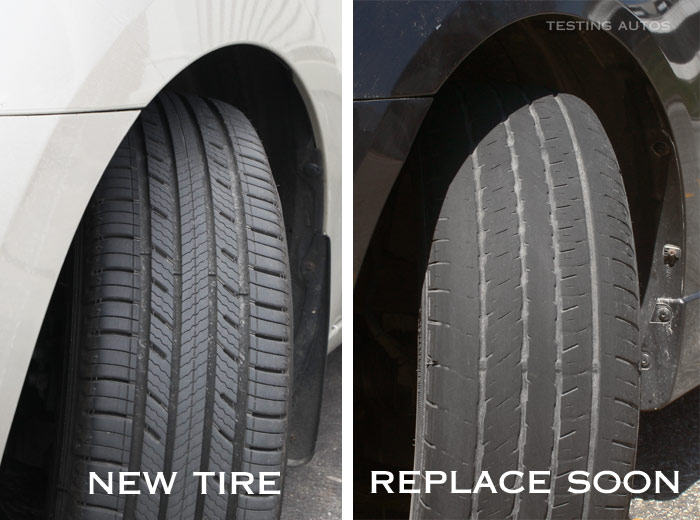 If not, check out my quick guide to learn for yourself. Either way, we all learned that tires will go flat and that’s a big problem.
If not, check out my quick guide to learn for yourself. Either way, we all learned that tires will go flat and that’s a big problem.
A flat tire occurs when something punctures your tire deep enough. If there’s a hole in one of the plies of your tire, then air will be able to escape, and pressure will be lost. Remember, the goal of these plies is to create an air-tight place for pumped-in air to live in your tires.
In general, the tread of your tires is pretty strong. A piece of gravel or hard rock probably isn’t going to puncture your tire deep enough to make it go flat.
Instead, it’s things like nails, screws, and broken glass on the road that can cause a flat tire. All it takes is a deep-enough puncture, and air will start escaping from your tire. Even a tiny hole can flatten your tire over enough time.
If you live in a state where the weather changes noticeably from season to season, you already know that your tires need to be refilled a few times each year.
This is due to the chemistry inside your tires. When temperatures rise, air particles get bigger and more energized. This raises tire pressure and causes your tires to expand. When temperatures drop, the air particles compress, lowering the tire pressure and shrinking your tires.
If you go through a few cycles of hot-to-cold temperatures, then your tires will be underpressurized and they’ll need a quick fill-up.
I just explained a little bit about a flat tire and how your tires need air sometimes. Now, let me give you some examples and questions to ask yourself to tell if your tire is flat or just needs air.
The most common reason why your tires need air is because of a change in temperature. If you want to quickly rule out a flat tire, take a look at the calendar and check the temperatures over the past week or so.
If they have been fluctuating a lot and it’s near Winter, then it could just be a matter of chemistry tanking your tire pressure.
This will happen when your tires get especially cold.
If all four tires are low at the same time, there are two options: either someone really dislikes you and slashed your tires, or the cold air got to your car.
It’s very uncommon for all four tires to pop at once while driving unless you went over a spike strip or did something really bad in your car.
In cases where more than one tire is low, there’s a good chance that you can thank Mother Nature.
The way that I personally tell if a tire is flat or just needs air is to take a quick drive.
If your tire just needs air, your air pressure will go up as you drive. Driving creates friction and heats up the rubber in your tire. As it heats up, the air expands and increases the pressure in your tire. This only happens when the tire is fully sealed and doesn’t have a hole.
If your tire is punctured, then driving around will either have no change on your tire’s PSI or it will lower it even further.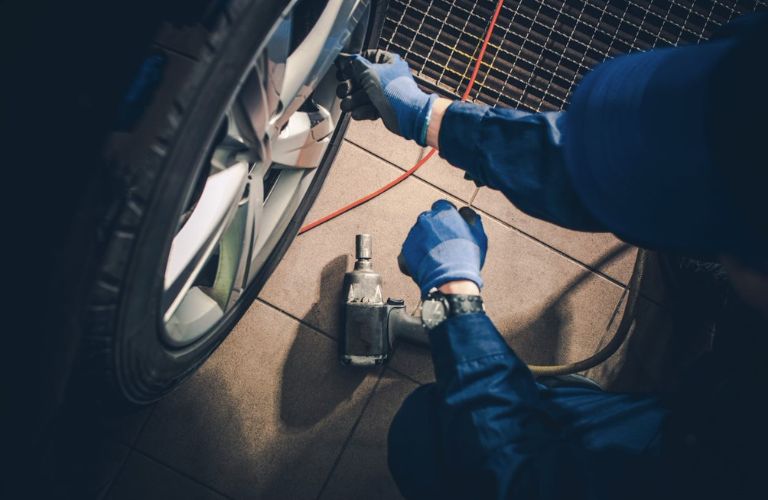 As the gas expands, it will just travel out of the puncture even faster.
As the gas expands, it will just travel out of the puncture even faster.
You’ll only be able to do this if you have a safe route to drive near your house. There’s a chance that you can get stranded if your tire is flat and the air keeps escaping, flattening your tire further — so be careful when you use this method.
Even if you don’t have a flat tire, it doesn’t hurt to add a little bit of air just to get your tire pressure up.
If you have a problem tire that you keep refilling, there’s definitely a puncture somewhere. I mentioned it earlier, but even a tiny hole in your tire will break the air-tight nature of your car and allow the PSI to drop. It might not happen in a few hours, but it could take a few days to drop your PSI again.
In this case, it’s technically a flat tire. The only difference is that the hole isn’t big enough to drop your PSI as dramatically as you’d expect. I would still suggest checking out your tire and looking for the puncture.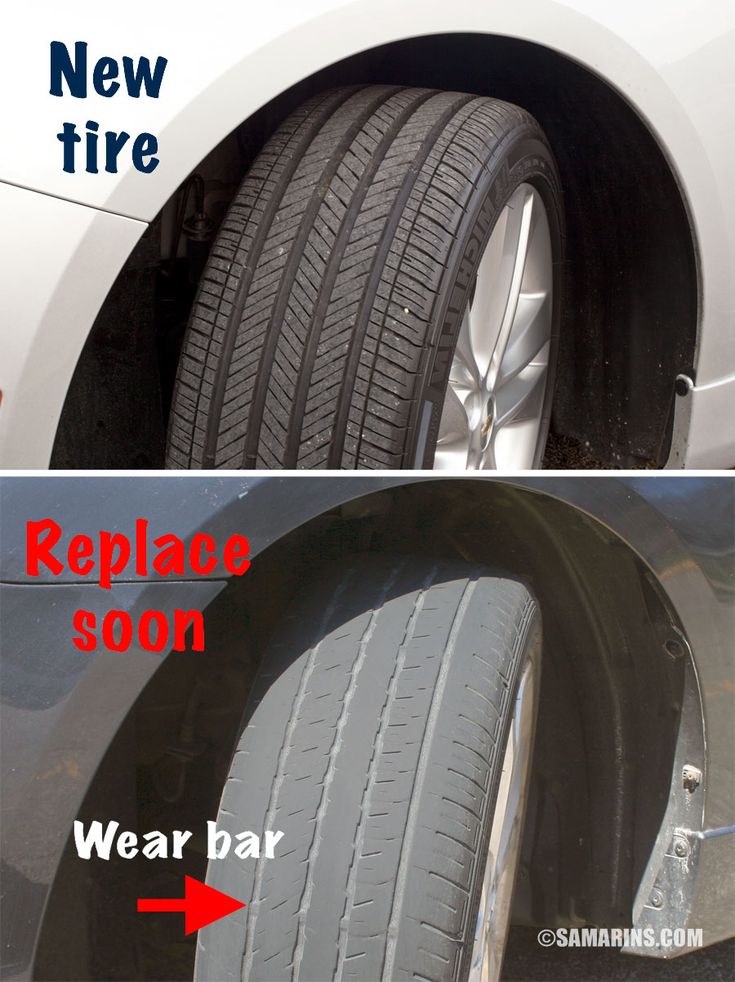 You can either patch the hole or replace the tires.
You can either patch the hole or replace the tires.
With seasonal changes, your tires will only drop a few PSI below the manufacturer’s suggested values. For instance, you might notice that your front tire is 28 PSI and it’s supposed to be 32. Not a huge difference, but you still need to add more air.
Rhino USA Heavy Duty Tire Pressure Gauge (0-60 PSI) – Accurate, Large 2 in.
Rhino Tire Pressure Gauge (0-60 PSI)Based on some other troubleshooting, a small difference like this is likely due to just the weather.
If you look at your tire and you get a reading of 14 PSI, then there’s no way that’s related to temperature. That’s a flat tire. Whenever you have a big drop in PSI like this, then you can rule out anything but a flat tire.
The best way to tell if you have a flat tire is to take off the tire and inspect it. A flat tire has some sort of puncture somewhere.
If you don’t see a puncture, you can use the bubble test.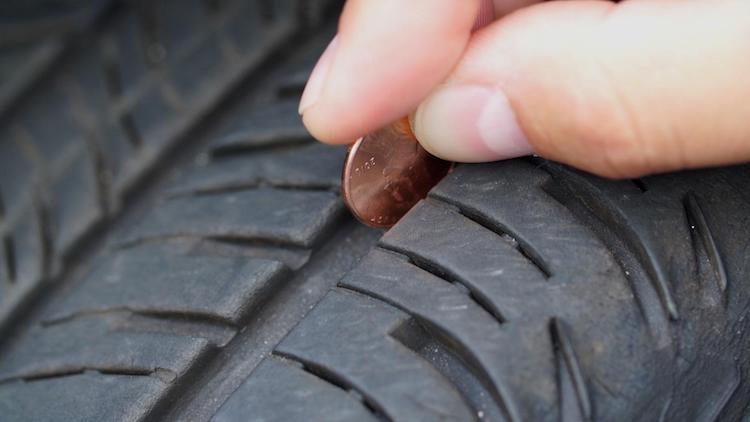 Fill a spray bottle with water and a little dish soap. Shake up the bottle to combine them.
Fill a spray bottle with water and a little dish soap. Shake up the bottle to combine them.
Grab the spray bottle and spritz it all over your tire, focusing on the tread. If there’s an air leak, there will be a lot of bubbles in the area, and you’ll see the motion as the escaping air produces more bubbles.
What if you don’t find the puncture? It doesn’t necessarily mean that there isn’t a puncture, just that it’s so small or in an obscure place.
If you determine that the loss of pressure is due to a flat tire, don’t waste any time. If the puncture is anywhere along your tire’s sidewall, there’s a chance the tire will explode. This is called a tire blowout, and it’s devastating for your car.
AUTOWN Tire Repair Kit – 67pcs
AUTOWN Tire Repair KitAny puncture results in a loss of structural integrity in your wheel. Some hole locations are a lot worse than others, but none of them are good. Once you find out you have a puncture, drop everything and fix it.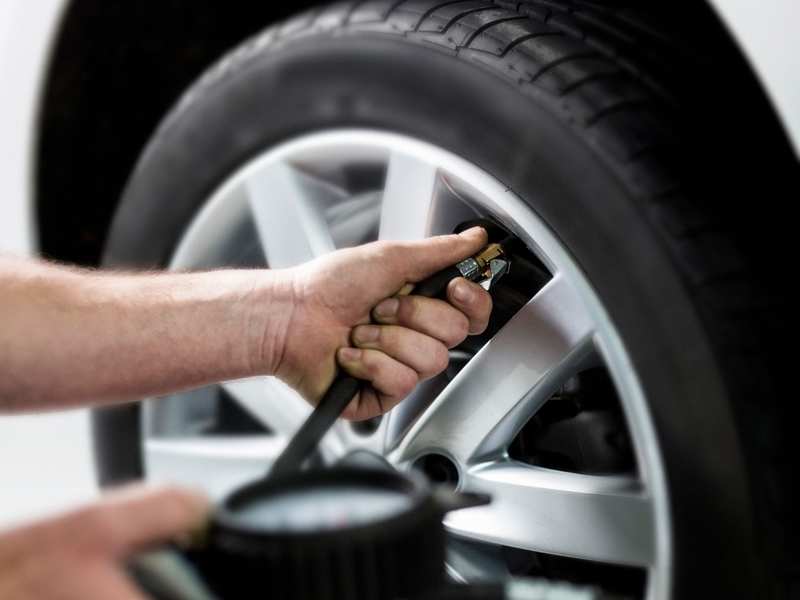
Now you’re a tire expert. Refer back to this guide if you’re unsure if your tire is flat or just needs air. For more troubleshooting guides, refer to the rest of my blog. I also have a list of products that can help you out, so take a look.
Your subscription could not be saved. Please try again.
Welcome to Motor Hills!
Tire pressure significantly affects driving parameters: comfort, car handling, economy and safety. It is important to maintain the pressure recommended by the manufacturer and check it regularly. Let's figure out how to do it right.
When driving on asphalt, incorrect tire pressure (both high and low) leads to a decrease in the contact patch with the road. An overinflated wheel clings to the surface only in the central part, which leads to its rapid wear. A poorly inflated tire, on the contrary, "sits" on the sidewalls, leaning on the shoulder areas of the tread and pushing the central part inward. Here's what it looks like:
An overinflated wheel clings to the surface only in the central part, which leads to its rapid wear. A poorly inflated tire, on the contrary, "sits" on the sidewalls, leaning on the shoulder areas of the tread and pushing the central part inward. Here's what it looks like:
Both under-inflation and over-inflation in tires create many problems for the driver.
1. Increased wear of the central part of the tire tread.
2. Reduced ride comfort, hardness of potholes and road bumps.
3. Increased load on the car's suspension due to reduced tire damping effect.
4. Risk of tire damage and herniation due to shock loading (getting into a pit or pothole).
5. Reduced control stability due to reduced contact patch.
1. Increased wear of the tread sidewalls (shoulder areas).
2. Severe deformation of the rubber when driving over bumps, which increases the risk of tire damage.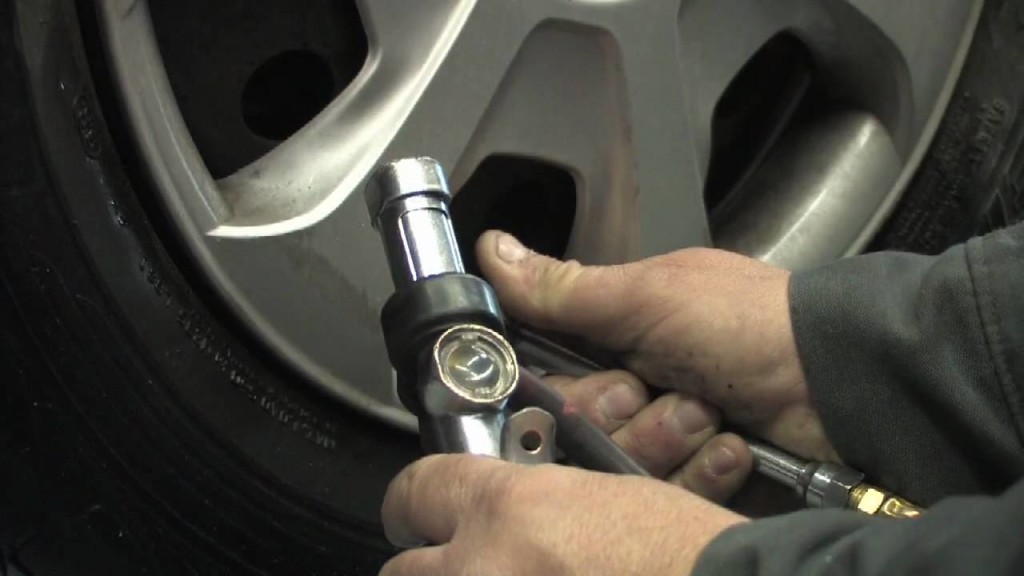
3. An increase in tire temperature, which threatens to delamination of the carcass and can lead to tire explosion at high speed.
4. Increased risk of hydroplaning on wet roads.
5. Risk of tire breaking.
6. Increased fuel consumption.
Reduced pressure hits the driver's pocket hard: a pressure drop of 20% (which is not uncommon: it is enough, for example, to deflate the wheels to 1.8 atmospheres instead of the manufacturer's prescribed 2.2) reduces tire life by 25-30% and increases fuel consumption fuel by 3%.
There is no universal tire pressure: it depends on the size of the tires, the characteristics of the car (primarily weight) and road conditions. Therefore, it is important to follow the factory recommendations, maintaining exactly the tire pressure that the engineers expected when designing the car.
The recommended pressure for your machine can be found in the operating instructions and on the sticker in the door frame. If, depending on the configuration, tires of several dimensions were installed on the car, then the pressure recommended for them may differ - look in the table for your exact wheel size. The manufacturer may prescribe an increase in tire pressure at the maximum load of the machine. For the spare tire (Spare tire), the required pressure is also indicated on a separate line - note that it is much higher than the standard one.
If, depending on the configuration, tires of several dimensions were installed on the car, then the pressure recommended for them may differ - look in the table for your exact wheel size. The manufacturer may prescribe an increase in tire pressure at the maximum load of the machine. For the spare tire (Spare tire), the required pressure is also indicated on a separate line - note that it is much higher than the standard one.
So, you have found the necessary pressure parameters, it remains to decipher them. In physics, pressure is measured in pascals, in real life - in anything: in bars, atmospheres, pounds-force, kilogram-force ... Drivers and tire workers usually use the term atmosphere, but such a unit is often absent on pressure gauges (pressure measuring devices) . Let's clear up this confusion.
Atmosphere is a non-systemic unit of measurement, approximately equal to atmospheric pressure on the surface of the Earth. Since it has become widely used, it was necessary to somehow equate it with correct physical units. For simplicity, one atmosphere is considered equal to one bar, one kilogram-force and one hundred kilopascals.
For simplicity, one atmosphere is considered equal to one bar, one kilogram-force and one hundred kilopascals.
In addition to the technical atmosphere (at), there is also the physical atmosphere (atm), which is slightly larger. Again, for convenience, they are considered equal. But all these assumptions introduce an error, so if you need accurate tire pressure, measure it correctly - in pascals or bars. Moreover, manufacturers usually indicate the pressure in these quantities.
Imperial pounds-force (aka PSI, “psy”), popular in the USA, is more difficult to translate, here you can’t do without a calculator. In the table, we have collected together all pressure units with exact values, and also approximately brought them to each other to simplify calculations:
| Pressure units | |||||
| Pascal | Bar | Technical atmosphere | Physical atmosphere | PSI | |
| 1 Pa | 1 N/m² | 10-5 | 10. | 9.8692•10-6 | 145.04•10-6 |
| 1 bar | 105 | 1x106 dynes/cm² | 1.0197 | 0.98692 | 14.504 |
| 1 at | 98066.5 | 0.980665 | 1 kgf/cm² | 0.96784 | 14.223 |
| 1 bar | 101325 | 1.01325 | 1.033 | 1 bar | 14. |
| 1psi | 6894.76 | 68.948•10-3 | 70.307•10-3 | 68.046•10-3 | 1lbf/in² |
It is advisable to check tire pressure daily, before driving. But this is only possible with a very measured rhythm of life. In reality, checking at least once a month is already an excellent indicator for the average driver. But before traveling a long distance, checking the pressure and visual inspection of tires and rims should be done in any case.
It is necessary to measure the pressure in cold tires, that is, before driving. During driving, the tires heat up, which increases the pressure by about 10%. Therefore, never release supposedly excess air from hot tires: after cooling, the pressure will be below normal.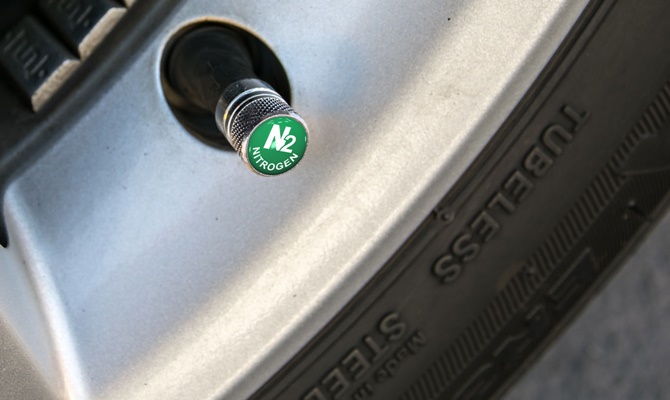 If you had to inflate a hot tire during a trip, inflate it 10% more than the nominal value, and check the pressure again when the wheels have cooled down - no earlier than 3 hours after stopping.
If you had to inflate a hot tire during a trip, inflate it 10% more than the nominal value, and check the pressure again when the wheels have cooled down - no earlier than 3 hours after stopping.
Always check the pressure in all tires. Different tire pressures seriously affect handling and can cause the car to pull to the side. Do not forget about the "spare tire": it should always be inflated in case of an unexpected wheel change on the road.
For long-term driving at high speeds (more than 160 km/h), car manufacturers advise increasing tire pressure by 0.2-0.4 bar from the recommended value. This will slightly improve the handling of the car, although it will negatively affect comfort. But such advice is relevant for driving on high-speed autobahns, and not for everyday urban use, especially in Russia.
Before a long trip on a dirt road or a road with a muddy surface (mud, snow), it is reasonable, on the contrary, to reduce the pressure in the tires - this will improve the grip. In summer, it is worth limiting yourself to reducing pressure by 5-10% of the nominal value, and in winter - by 10-15%.
In summer, it is worth limiting yourself to reducing pressure by 5-10% of the nominal value, and in winter - by 10-15%.
The pressure in low-profile tires (especially non-standard sizes) must be monitored especially carefully. Low profile tires have two features: a low sidewall (profile) height and a large rim diameter. If the tire has the correct air pressure, only the tread is in contact with the road. Low pressure causes the sidewall of the tire to bend, causing it to touch the roadway and wear out quickly, up to complete abrasion. And punching a low-profile tire in a pit at low pressure is much easier.
When inflating low profile tires, you need to focus on the pressure indicated for a full load of the machine and the maximum allowable pressure for a particular tire. It is indicated on the sidewall, next to the inscription max pressure, in one of the accepted units of measurement: kilopascals (KPA), bars (BAR) or pounds-force (PSI).
Modern cars equipped with sensors in tires and a TPMS (Tire pressure monitoring system) pressure monitoring system themselves monitor the pressure in each wheel and signal deviations, which is very convenient. If there is no such system in the car from the factory, you can install it yourself.
But the old manual measurement methods are still in use. Firstly, any modern car compressor is equipped with a pressure gauge: by inflating the wheel, you immediately control the pressure.
Secondly, there are compact hand-held pressure gauges: no need to unpack and connect the pump to check the pressure, and the measurement accuracy of such a pressure gauge is usually higher than that of a built-in compressor instrument. There are also modern digital pressure gauges on sale that allow you to switch pressure units on the fly and save readings in memory, which is very convenient.
Finally, if you want to entrust all maintenance of the car to professionals, you can use the services of tire fitting. In Hyperauto car services equipped with tire fitting areas, experienced mechanics will accurately measure and correct tire pressure, assess the condition of the tire tread and perform any other work with the wheels.
In Hyperauto car services equipped with tire fitting areas, experienced mechanics will accurately measure and correct tire pressure, assess the condition of the tire tread and perform any other work with the wheels.
As a rule, any car owner has at least two sets of tires - winter and summer. Accordingly, the question arises of storing an unused set of tires. Some car owners do not wonder how to properly store tires. As a result, tires become unusable and you have to bear additional costs for the purchase of new rubber. Moreover, you can spoil the summer kit literally in a season. As a result, in the spring, instead of taking off winter tires and putting on summer tires, you will have to purchase a new set of tires. And all the problems are only due to improper storage of tires in your garage. By the way, you can store tires not only in the garage. There are special organizations that accept car tires for storage, providing proper conditions and care.
When you ask how to store rubber, you don't have to ask friends or acquaintances for advice, don't look on specialized forums and websites (although this is a useful and necessary thing). It is enough to study the legislation in the field of state standards. In particular, GOST R 54266-2010 provides the necessary information on the storage conditions of automotive rubber. It's called Pneumatic Tires. Packing, transportation and storage. Despite the fact that the standard was developed in the Russian Federation, it complies with European standards and rules for storing tires. Briefly describe the main conditions specified in the standard:
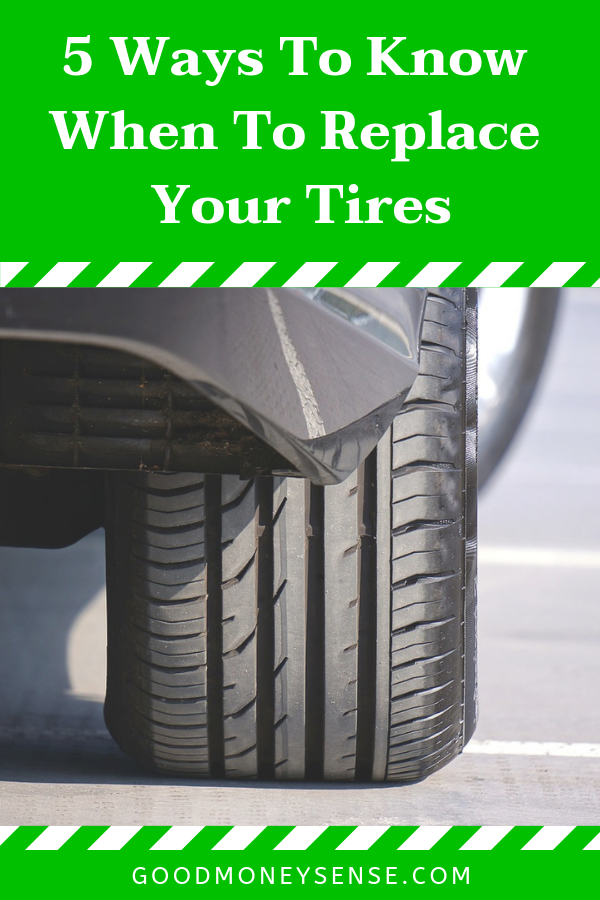
Everyone understands that in a garage or in a country house, and even more so in an apartment, it is not always possible to achieve literal adherence to the requirements of GOST for the storage of tires. For example, if the tires are on the balcony, the requirement to keep the tires outdoors for a long time will not be met. On the other hand, frost up to minus 35 degrees is not terrible for tires, so you can not be afraid to damage a summer tire. The main thing is to protect the tire from precipitation and sunlight, because ultraviolet is very harmful, it changes the structure of rubber, reduces elasticity. As a conclusion, tires can be stored on the balcony, covered with waterproof material.
It is important to ensure that the tires do not deform. In this case, it would be correct not to use cramped places, not to press down the rubber set with other objects, and to keep it on a flat surface. It is impossible to keep the tires standing up all the time, they can undergo irreparable deformation and only partially recover.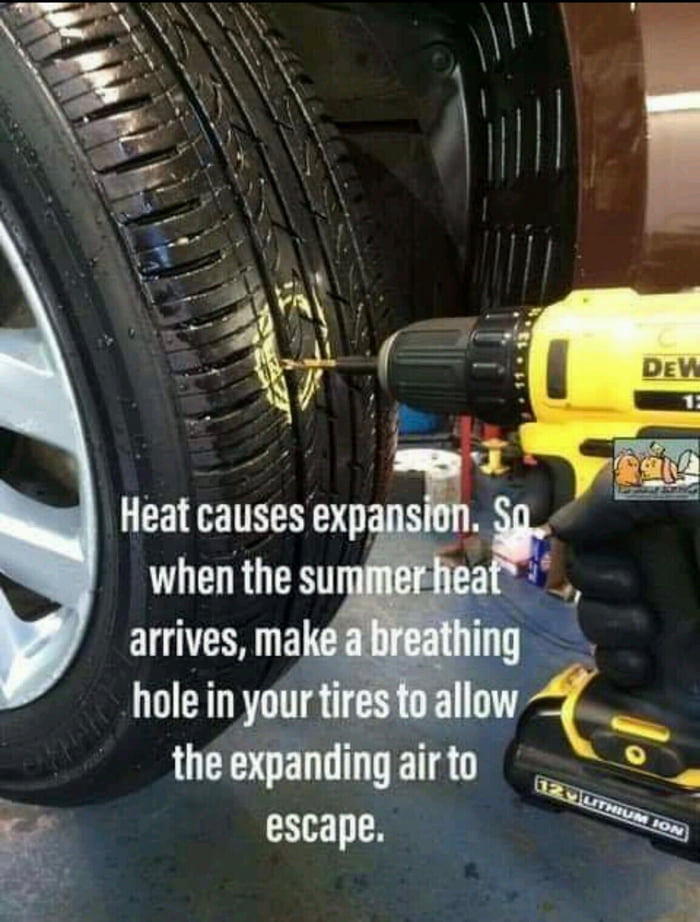 Tires can stand in one position for no more than a month, after which they must be turned over.
Tires can stand in one position for no more than a month, after which they must be turned over.
Suspended tire storage excluded. Although this option of staying rubber is found in some garages. On the other hand, the wheel assembly can hang safely without much harm. Moreover, this method is the most successful for the wheels in the kit, the only thing is to reduce the pressure in the tires.
Proper storage of tires means keeping them away from heating devices, including radiators and heaters. This is a very important note that must be strictly followed. Otherwise, under the influence of high temperatures over 30 degrees, the rubber may receive irreparable damage and deform.
Car owners often ask how long it is possible to store different types of car tires in the lying position. There is a GOST rule that regulates this option for finding rubber in a warehouse or garage. However, it is not always necessary to follow it strictly. It will be correct to find the tires in the supine position. It is also allowed that the tire will stand upright, especially since many garages store tires standing up. Moreover, standing position is also acceptable for the wheel assembly. The main thing is to control how much the kit already costs and change the position in a timely manner.
With regard to the storage service for winter or summer sets of tires, it is provided by many service stations that carry out tire fitting, as well as large centers selling car tires. Moreover, the wheels can also be stored together with the disks. As a rule, such a service provides for the location of tires or wheels in a covered hangar without heating. The main thing is that the basic rule of storage is observed - the temperature regime is maintained.
As a general rule, car tires should not be near solvents or other chemical elements that can have a negative effect on rubber. It is also unacceptable to find nearby sources of ozone - transformers, electric motors and other equipment.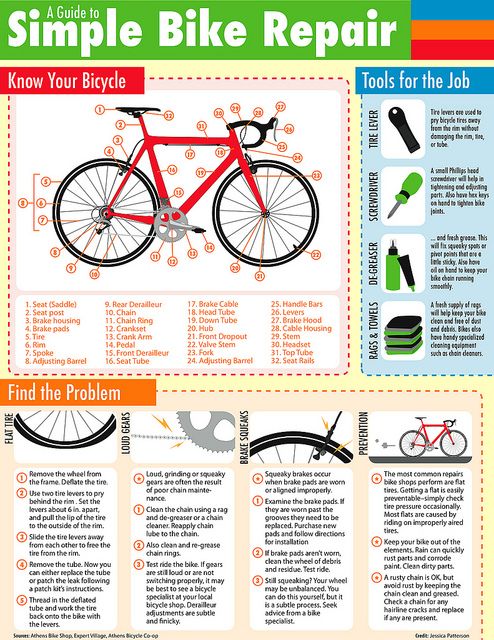
After the end of winter, for all car owners, there comes a period when it is necessary to change the winter set of tires to summer. At the same time, the fact of replacement causes a problem, and the need for proper storage of tires during the entire summer period of operation.
The rules are simple:
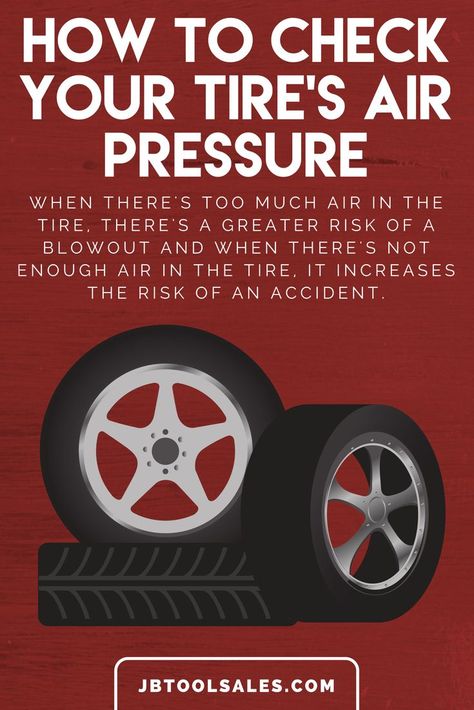
Summer Drive Protection Sound Comfort
Rating:
4.5
Tires Goodyear Eagle F1 Asymmetric 3 SUV
Summer Drive protection
Rating:
4.5
Tires Goodyear Eagle Sport TZ
Summer Drive protection
Rating:
4.5
Tires Goodyear EfficientGrip 2 SUV
Summer Drive Protection Run On Flat
Rating:
4. 5
5
Tires Goodyear EfficientGrip Performance
Winter Drive protection
Tires Goodyear UltraGrip Arctic 2 SUV
Winter Drive Protection Sound Comfort
Rating:
4.5
Tires Goodyear UltraGrip Ice 2
Winter Drive Protection Sound Comfort
Rating:
4.5
Tires Goodyear UltraGrip Ice SUV
Winter Drive protection
Tires Goodyear UltraGrip Performance+ SUV
All season Drive protection
Rating:
5
Tires Goodyear Vector 4Seasons Gen-3 SUV
Summer Drive Protection Run On Flat
Rating:
4
Tires Goodyear Wrangler HP All Weather
All season Drive protection
Rating:
4.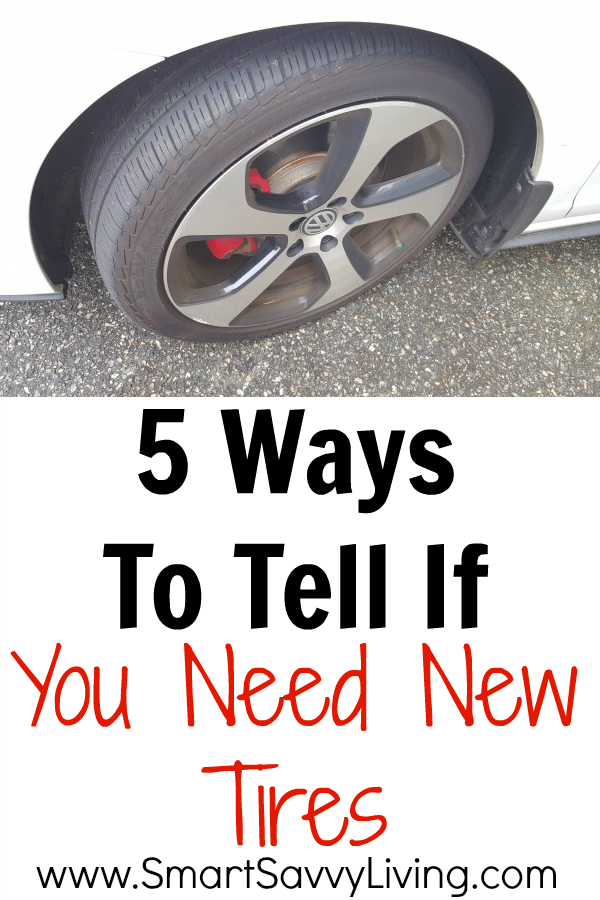 5
5
Tires Goodyear Vector 4Seasons
Summer
Rating:
4.5
Tires Goodyear Wrangler All-Terrain Adventure with Kevlar
Summer Drive protection
Rating:
4.5
Tires Goodyear EfficientGrip SUV
Summer Drive Protection Run On Flat
Rating:
4
Tires Goodyear Eagle F1 Asymmetric SUV
The procedure and rules for storing summer tires in winter is practically no different from a similar procedure for winter tires.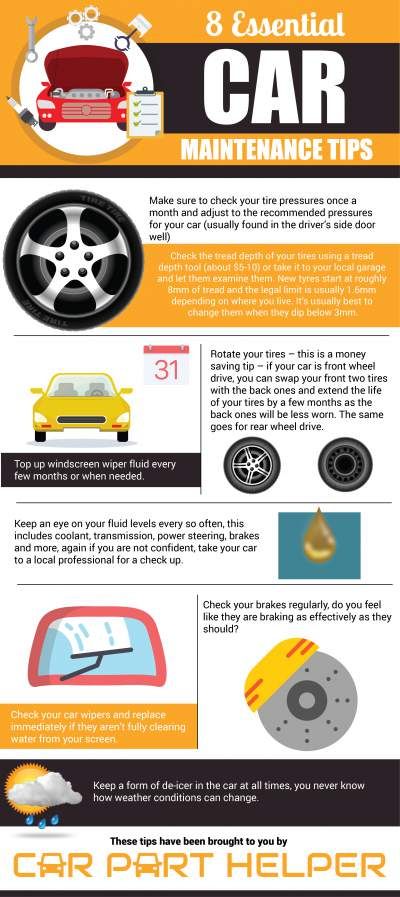 First of all, the tires must be marked and thoroughly cleaned of dirt and small stones, and be sure to rinse and dry. Car tires wear out very much in summer, so it is worth swapping them when installing after winter to ensure balance.
First of all, the tires must be marked and thoroughly cleaned of dirt and small stones, and be sure to rinse and dry. Car tires wear out very much in summer, so it is worth swapping them when installing after winter to ensure balance.
Car tires may be stored vertically or horizontally in summer. At the same time, if the tire is complete with a disk, then it should not stand. The wheel assembly will properly hang on cables or ropes. Also, the correct position for a tire with a disc is lying horizontally. Wheels can lie in a stack of several pieces, no more than 4-5. If there is no other option for storing the wheels in the kit, except for standing, then you need to keep track of how long they are in one position and periodically turn them to change the place of pressure. It will be correct to change the position every 2-3 weeks.
Wheels without rims must not be hung correctly, they can be deformed by prolonged lateral loads. It is allowed to store tires without rims in a stack, but not more than a month and in a stack no more than 5-6 pieces high. Although this is not the correct position for summer tires in a garage or hangar.
Although this is not the correct position for summer tires in a garage or hangar.
The most correct option is to place tires vertically:
The main condition is a flat surface, without sharp edges and protrusions, so as not to damage the surface of the wheel. It will also be correct to rotate the tires once every 2-3 weeks.
In winter, temperatures can drop to very low levels. The main thing to remember is that the car rubber should not be allowed to stay at a temperature below 35 degrees, in which case its deformation is possible. It is best to store in the winter in a garage in compliance with the requirements indicated above.
If you have two sets of wheels, for example, winter and summer, then you will be interested in how the tires should be properly stored in the garage or elsewhere. In this case, it will be correct if the wheels do not lie at all.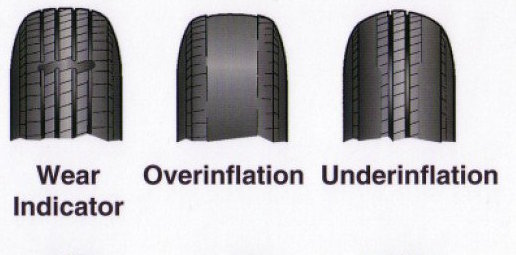 In this case, they will not undergo deformation under the influence of gravity.
In this case, they will not undergo deformation under the influence of gravity.
The best storage with discs is hanging. To do this, the wheels must be thoroughly washed and cleaned of dirt, and also dried. It will be correct to treat the rubber with a special care compound. The pressure in the wheels is lowered to the level of 1-1.5 atmospheres.
It is advisable to mark the wheels so that you can understand where they were and change them after storage. In this case, you can correctly distribute the balance and prevent uneven rubber wear.
It is also allowed to store wheels on rims in the garage horizontally stacked on top of each other. How much can be stored depends on the size of the wheel and its weight, but no more than 2 meters in height. Properly store on a flat surface, without corners and irregularities - on the garage floor or shelving.
The rules for storing wheels without rims are no different from other options. It is correct to carefully prepare car tires for seasonal storage - this is cleaning from dust and small debris, washing, drying.
It is correct to carefully prepare car tires for seasonal storage - this is cleaning from dust and small debris, washing, drying.
The main difference in storing wheels without rims is the correct way to keep them upright. In this case, they stand on a flat surface, the main thing is to rotate them periodically by 20 degrees to prevent rubber deformation. The garage is an ideal place to store a seasonal set of wheels without rims. If, of course, the place allows and the basic requirements for temperature and humidity are maintained. They can stand on a special rack or floor, the main thing is the absence of bumps and sharp corners, otherwise you can easily damage the surface of the tires.
If the garage does not allow keeping extra property in it, there are not enough normal conditions for a car, then you can keep tires on the balcony or in the pantry. The main thing is to withstand the temperature regime, properly store in direct sunlight (cover), avoid staying in conditions of high humidity or vice versa, excessively dry air.